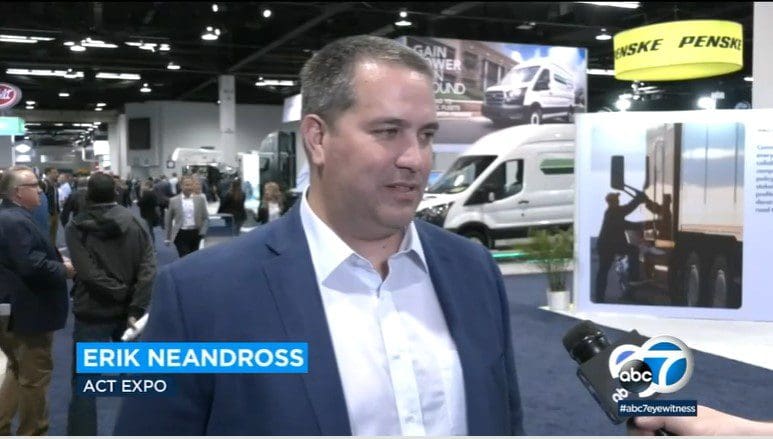Source: ABC7
ANAHEIM, Calif. (KABC) — California has a goal of having all big rigs that travel across the state to have zero-emissions technology.
However, one of the biggest hurdles is the cost.
Big rigs are vital to commerce, but can also be harmful to the environment – though things are changing.
“In 10 or 15 years, the truck world is going to look completely different,” said Brad Skarsten withTom’s Truck Center. “And what’s going to happen with the existing vehicles is they will be retired.”
As with passenger vehicles, there is a big push from all levels of government to clean up this part of the transportation system. At the recent Advanced Clean Transportation Expo in Anaheim, interest in new electric commercial trucks was quite strong.
“This year we had a record-breaking attendance – 50% more people than we had last year, which was 50% more than we had the year before. So that interest is growing every single day,” said Erik Neandross with the ACT Expo.
Long-haul trucks that traverse the country present the biggest challenges. But the ones that move cargo regionally are very much able to go electric, in theory. Truck manufacturers are rapidly developing new models that can haul the goods, cleanly, with battery power.
“It’s a long journey, and everybody faces the same challenges. Electric powertrains take some education. We’re all kind of in the same boat on this journey to electrification,” said Alexander Voets with Velocity EV.
Recharging the huge batteries will be one of the coming logistical challenges, but there is also another variation on the clean power theme: Hydrogen fuel cell Class-8 trucks that rely on refueling, rather than recharging.
Hyundai’s new offering is named Xcient.
“Fundamentally it is an electric vehicle. But instead of storing it in a battery, it’s making electricity as it goes,” said Jerome Gregeois with Hyundai.
That’s just like the thousands of fuel-cell passenger cars already in use, only scaled up. So these electric big rigs can do a lot of the local driving, between the ports and warehouses and between warehouses and stores. But of course, there is also infrastructure, and then there’s the cost of getting these rigs out on the road.
Current diesel-powered tractors can cost $125,000 and up. But a new fully electric model can cost two or three times that, at least at this stage. Some models approach the $500,000 mark.
That puts a big financial burden on owner-operators and smaller fleets.
To help ease that burden, there are government rebates, which can reduce the difference significantly.
“The state of California offers an HVIP program, which offers incentives to them. And they’re working toward small fleets as well. There’s other programs for the large fleets,” said Skarsten.
In addition, operating costs over an electric truck’s lifespan are projected to be much less, due partly to lower maintenance needs. This planned long-term switchover would also have another benefit in the form of reduced noise. And that could make the trucks appealing to everyone.
“The noise level is down, the emissions are zero. So it helps the neighborhoods they’re going through,” said Skarsten.
We’ll always see large commercial trucks on our local roadways, as they’re a necessity.
However, in the future, we’re not as likely to smell them – or hear them – pulling those heavy loads.


